Several ways in which these super sick birds are great.
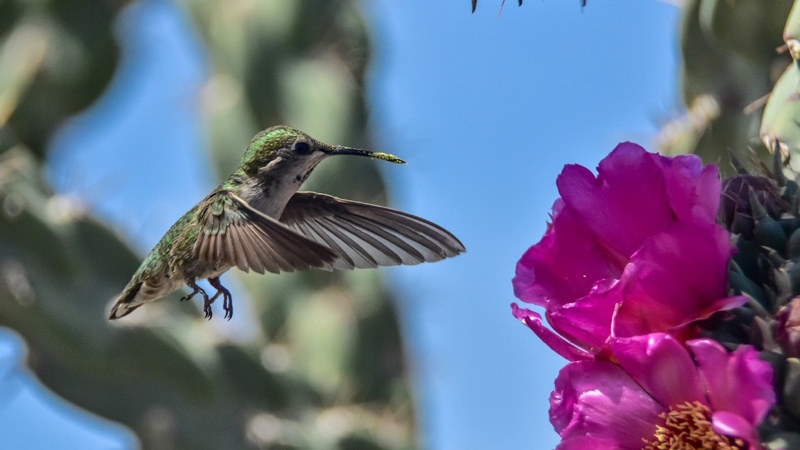
This is not meant to disparage bees, which can pollinate thousands of flowers per day, create honey, and, according to experts, are the world’s smartest bug. What I am here to talk about today is just how great hummingbirds are. Here are some of the ways in which hummingbirds are truly sick pollinators (and birds, in general).
[mf_h2 align=”left” transform=”uppercase”]Hummingbirds pollinate flowers no other animal can.[/mf_h2]
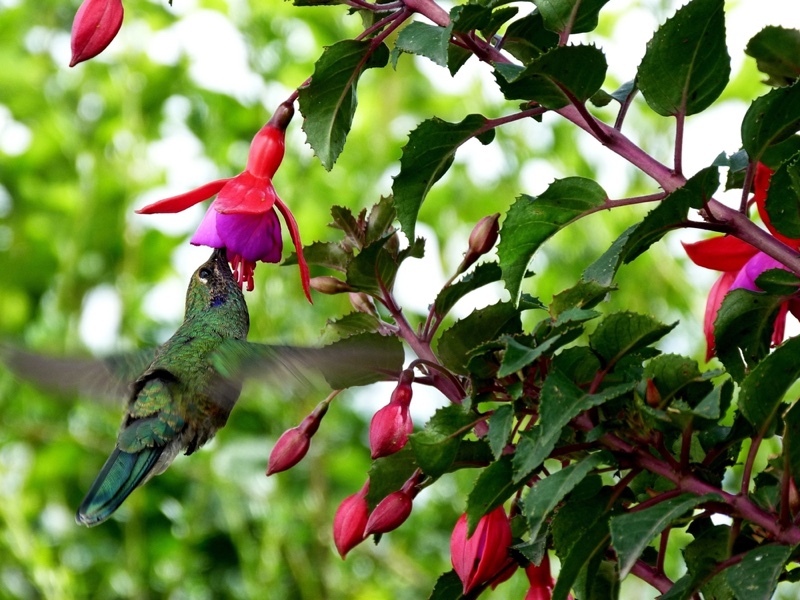
Miles_0410 / Shutterstock.com
Hummingbirds boast long, thin beaks, which allow them to get deep into the interiors of flowers that even large bees may not be able to spelunk. Whether the hummingbird evolved to take advantage of these flowers or the flowers evolved to take advantage of the hummingbirds (or both), the fact remains that hummingbirds can tackle the most forbidding of flowers.
[mf_h2 align=”left” transform=”uppercase”]They collect pollen in very adorable ways.[/mf_h2]

NowhereLand Photography / Shutterstock.com
Bees spread pollen when it sticks to the hairs on their bodies and rubs off on other flowers. Good method! But hummingbirds are even cuter. They transfer pollen when it sticks to their beaks or their adorable tiny foreheads. Look at that little guy! Haha!
[mf_h2 align=”left” transform=”uppercase”]They don’t damage flowers.[/mf_h2]
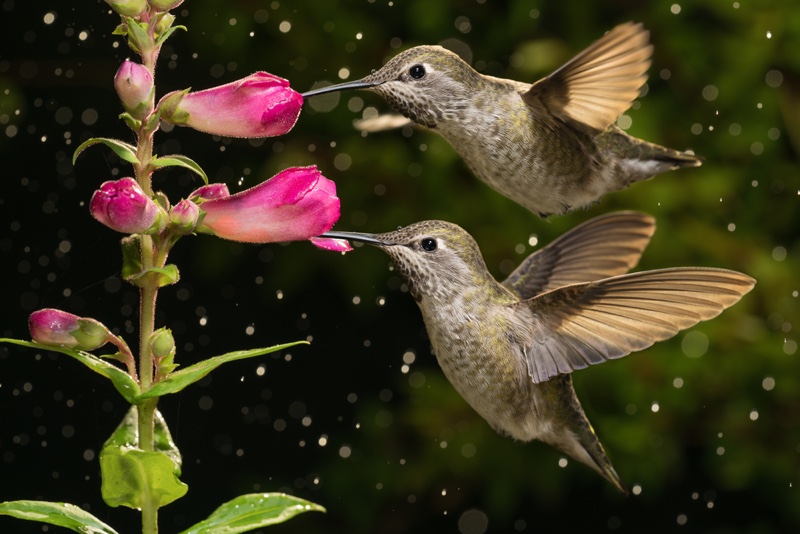
Freebilly / Shutterstock.com
Lots of animals pollinate flowers, but the larger ones can sometimes cause unexpected damage. For example: Lemurs, rodents, and possums all serve as pollinators, mostly by getting pollen stuck in their fur, but these bigger, heavier animals can sometimes damage a plant. Not hummingbirds! Hummingbirds are delicate creatures that rarely land; their feet are tiny and weak, so they primarily just hover next to flowers while eating. How gentle!
[mf_h2 align=”left” transform=”uppercase”]They have some extremely sick names.[/mf_h2]
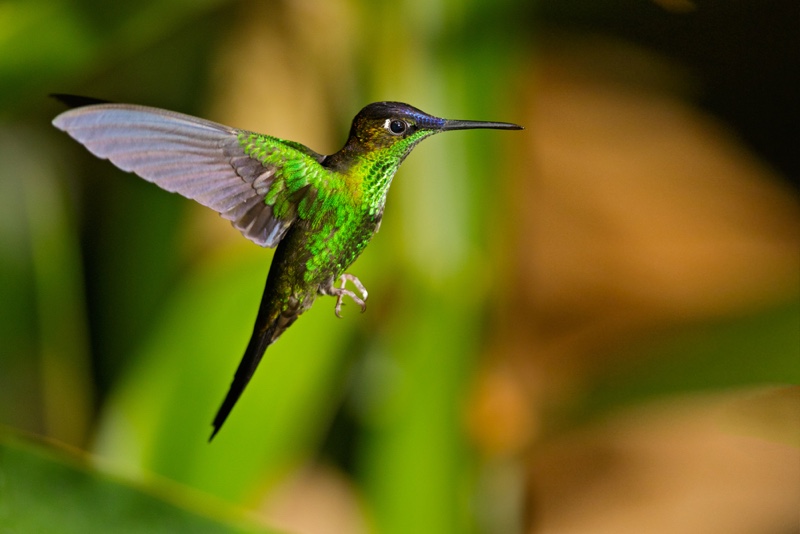
Erick Houli / Shutterstock.com
Hummingbird species are separated into clades, which are basically different categories of birds. Most animals are divided into clades; this is not unusual. What makes hummingbird clades so fun is that they’re named for how the hummingbird looks, and hummingbirds look extremely cool. The bird above, for example, is in the “Brilliant” clade. Other clades include “Topaz,” “Mango,” “Gem,” and “Emerald.”
[mf_h2 align=”left” transform=”uppercase”]They have insane beaks like this.[/mf_h2]
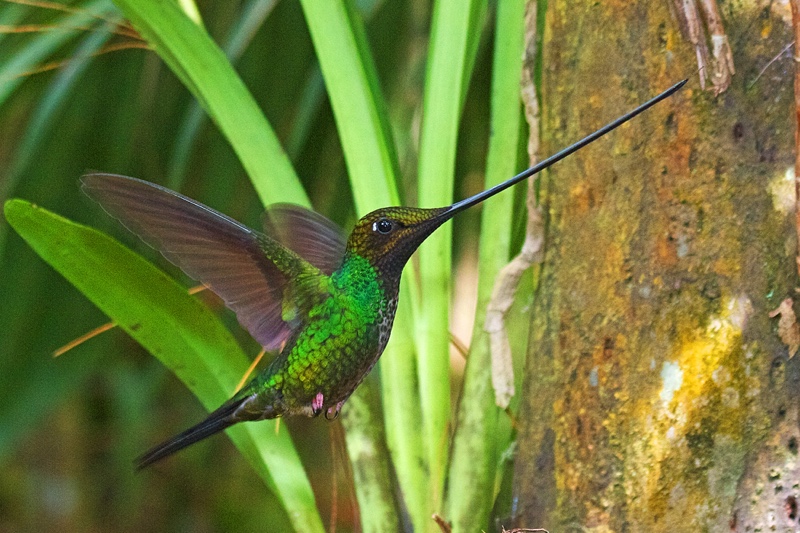
By Joseph C Boone – Own work, CC BY-SA 3.0, Link
This right here is the sword-billed hummingbird, which lives in mountainous regions of western South America. It is the only bird species to have a bill longer than its body. It usually feeds on flowers with very deep chambers, but it can also, despite its very long bill, feed from short feeders, too. The Internet Bird Collection has some great videos of this hummingbird if you’re interested, and we assume you are interested, so go check it out.
[mf_h2 align=”left” transform=”uppercase”]Hummingbirds can imitate songs.[/mf_h2]
It’s not widely known, but hummingbirds are very vocal and can be territorial and aggressive when around food sources. They’re one of only a few species that have shown the capability of “vocal learning,” which is the ability to imitate new vocalizations. Parrots and songbirds are the only other bird species to have this ability, a skill that’s shared with only humans, whales, dolphins, seals, elephants, and bats. Not even non-human primates can do this!
In conclusion, hummingbirds are extremely good birds and awesome pollinators. Thank you.
I thoroughly enjoyed your fascinating article- loved your unique voice- “appeals to the young ones as well as the young at heart”. I particularly greatly admired your photographs. I was wondering if the photos are copyrighted and permission etc. is needed to use them. My reason for asking is that I was supposed to be participating with my City, which was just designated a Pollinator City, in a Pollinator Week Kick-Off in June, which naturally was cancelled. Seeing that I am children’s author and illustrator, the City asked me to create an activity booklet for kids the important role of… Read more »